Tables covered with flying white cloths and laden with food appear out of nowhere for a crowd of several hundred in a piazza at the edge of the cliff, in the oldest part of this old city. Strings of dazzling lights stretch across the square as a dove flies up and the bells of the thousand-year-old church of San Giovenale clamor in the black night. Actors in white linen shower the crowd with tiny flower petals. This night’s itinerant theater performance has transformed into a banquet in which actors and audience are no longer separated, the barriers gone. All are invited. This is the culmination of our journey through the streets of Orvieto, our revivification of medieval city theater.
THAT’S THEATER ARTIST KARIN COONROD describing the conclusion of a sequence of medieval sacred dramas performed in 2006 for the festival of Corpus Christi in Orvieto, Italy.
The works were selected from the cycles of so-called mystery plays often performed during Corpus Christi in England. They were configured so that the play in which Jesus meets the two disciples on the road to Emmaus frames the others. Instead of explaining “what was said in all the Scriptures concerning himself,” as he does in Luke’s Gospel, in the play, Jesus sings a new song, “Don’t you remember?”
Coonrod explains: Jesus “takes the disciples—and by extension, the audience—on a passeggiata during which he asks them to remember five moments of divine intervention: creation and fall, the flood, the sacrifice of Isaac, the nativity, and the descent into hell.” When the resurrected Christ reveals himself to the two disciples in the breaking of the bread, the audience is invited to join the supper—a real supper supplied by the women of the San Giovenale parish.
This ongoing project is quintessential Coonrod. It exhibits elements that have marked her approach to theater throughout her career: forming a close-knit ensemble among the actors, musicians, and tech team; drawing the audience into the action; designing stagecraft with a choreographer’s eye; and remaining faithful to the text while revealing its timeliness.
But let me come clean. Karin Coonrod and I have been close friends since our college days in the early 1970s. Our shared love of medieval and Renaissance literature and Shakespeare led us both into vocations that deal with premodern European culture. I suspect I have seen as many of her plays over the past thirty years as anyone (excepting her husband, Jonathan Geballe), from the earliest plays of her first company, Arden Party, to her recent production of Shakespeare’s Merchant of Venice. And I have been Coonrod’s collaborator for all her productions in Orvieto, having helped conceive her second theater company, Compagnia de’ Colombari.
I knew her beloved parents and their story of courtship and marriage in Trieste after the Second World War, when Karin’s war-vet father Roger fell in love with the polyglot Florentine Anna-Maria who was teaching war brides English. The young couple went to Paris, where Roger studied art history at the Sorbonne, and Anna-Maria studied drawing and painting at the Louvre. Once back in Roger’s home state of Indiana, Karin’s mother became a professor of French at the University of Indiana and her father began a career in insurance, eventually taking the family to New Jersey.
“At the breakfast table I sat down with two continents, with America and with Europe. To the very end of their fifty-four years together, my parents had love for and a loyalty toward each other, but had very different approaches to life, almost diametrically opposed,” Coonrod told Romanian playwright Andràs Visky in an interview.
Perhaps Coonrod’s familial breakfast table helped make possible the remarkable mixed cuisine of her work, from adaptations of works by American writers Walt Whitman, Anne Sexton, Gertrude Stein, and Flannery O’Connor to productions of modern European masterworks such as Pirandello’s The Giants of the Mountain and Enrico IV, Brecht’s The Threepenny Opera, Vitrac’s Victor, or Children Take Over, Jarry’s Ubu Roi, Beckett’s Waiting for Godot, Visky’s I Killed My Mother and Juliet, Charles Mee’s A Perfect Wedding—and of course the ancient Greeks: Sophocles’s Antigone and Euripides’s Phoenician Women.
Then there’s the medieval-Renaissance English stuff, including most of the Shakespearean canon. Coonrod is widely recognized as one of her generation’s leading interpreters of Shakespeare. She was invited by Shaul Bassi, Shakespeare specialist at the Ca’ Foscari University in Venice, and American Shakespeare scholar David Scott Kastan to direct an enormously freighted production of Merchant of Venice for two coinciding commemorations in 2016: the five-hundredth anniversary of the establishment of the Jewish Ghetto in Venice and the four-hundredth anniversary of Shakespeare’s death.
Coonrod’s first job, after studying medieval literature at the University of Durham (UK), was teaching drama at a Catholic boys’ school in New Jersey where the gymnasium doubled as a theater. In an interview, Coonrod recounts her final production at the school, Andrew Lloyd Webber’s Joseph and the Amazing Technicolor Dreamcoat.
I didn’t know much about basketball but I knew there’s a space in the middle where two tall players jump for the ball. That’s where I wanted to start the play. I wanted to baptize it for the theater, so that the gymnasium will be seen as a gymnasium but would never be forgotten as a theater. We bought white sports jerseys with the brothers’ names: Levi, Benjamin, Joseph, and so forth. The art department created a huge camel that Joseph came in on; the objet de résistance. But everything else was very simple and it flew. In the round, on the floor of the gym where they had only ever seen basketball, they were now seeing a play. And the people, at the last performance, they lifted me up. They were so excited, and they knew they’d done such great work. It shifted their whole imagination. They never saw the gym the same way again.
With that success, Coonrod understood her calling. She made her way to Columbia University’s graduate program in directing. In her second year her production of Aristophanes’s The Birds caught the attention of Liviu Ciulei, the great Romanian director, who invited her to be his assistant and would become her mentor. She used her thesis production to start her first company, Arden Party.
Shaping the Team
In December 2004, John Heilpern, longtime theater critic for the New York Observer, wrote:
I had gone on an impulse to see Lorca’s The House of Bernarda Alba at the theater of Riverside Church. A favorite director of mine, Karin Coonrod, was directing a group of sixteen Columbia University acting students, and I was interested to see what she and the playwright Nilo Cruz could bring to the great drama that was written in blood and bitumen black. My, my! The Lorca ensemble sent sparks off the stage from their opening flamenco of awesome power and fury. They brought to the play such vitality and discipline and maturity that I was left astonished. To say these talented youngsters were as good as any professional ensemble would be patronizing. The Award for Best Ensemble of the Year gladly goes to the Columbia University School of the Arts MFA Acting Class.

PLATE 1. Strangers & Other Angels, 2006. Compagnia de’ Colombari in Orvieto, Italy. Karin Coonrod, director. Gianluca Foresi (Satan) with company and audience. Photo: Massimo Achilli.
Coonrod’s early strategy of shaping groups of actors and technicians into tight-knit ensembles became a constant in her approach. Instead of secondary actors moving as planets around a main star, she sees all the actors as “stars in a single constellation.” She inspires such loyalty in her team that their focus and concentration spread over every square inch of the stage. The energy field is palpable. Every body, every sight line among the actors, is equally taut. Nor is the ensemble just the actors. Her technicians and stage staff often do their work out in the open as participants in the play, as do the musicians—not invisible in the orchestra pit but figures in the action.
A major challenge in mounting the low-budget mystery plays in the streets and piazzas of Orvieto was the lighting, since laying electric cable all through town was impossible. “Designer Chris Akerlind found a solution,” Coonrod writes. “He used powerful hand-held spotlights in the piazza to sculpt entire scenes. For the intermezzo movements, Chris devised twelve long, portable battery-powered light sticks to illuminate the moving actors.” For the nativity scene in Piazza della Repubblica [see front cover], lighting designer Peter Ksander directed his lamp up through Mary’s arms from below:
Patrice Johnson (playing Mary) gently cradles and rocks the light. All eyes are on Mary’s strikingly serene face. The nativity star is held high by a young Orvietana actor while the Holy Trinity and the angels look on…. The baby in arms becomes the source, rather than the object, of the light.
That’s Coonrod’s inventiveness: using a pragmatic necessity to illuminate the theme.
If the ensemble approach began as a means of unifying the team, it matured into a mode of interpreting the text. For her production of Flannery O’Connor’s short story “Everything that Rises Must Converge,” Coonrod observes:
The guiding principle…was to allow the stories to speak out for themselves. Instead of representing a “Flannery O’Connor” character narrating off to the side of the stage (or at her typewriter), I wanted to present the narration emerging from a community of voices by splitting it among the company of actors. In this way the actors both play the roles and tell the story.
When in the mystery plays, the same actor plays Eve and then Mary—the disobedient Eve inversely mirrored in the obedient Mary—the effect is to help a modern audience experience the typological imagination that informed medieval theater. The reverse—multiple actors playing a single character—opens up innovative ways of exploring character. There are five Shylocks in Coonrod’s production of the Merchant of Venice. As she explains:
Rather than concentrating the dimensions of Shylock on one actor’s interpretation, I went a different direction, and one consistent with my ensemble company: opening up the character to five actors of different age, size, race, and gender, each actor playing one of Shylock’s five scenes. The point was not to ignore Shylock’s Jewishness, nor to divide his complex character, but to unlock and unveil the common humanity of his being.
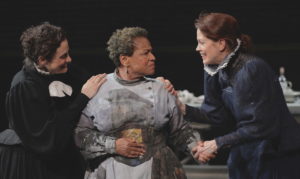
PLATE 2. Babette’s Feast, 2018. Theatre at St. Clement’s, New York. Karin Coonrod, director. Actors: Abigail Killeen, Michelle Hurst, Juliana Francis-Kelly. Photo: Carol Rosegg.
Drawing in the Audience
In the summer of 2014 in the garden courtyard of a fifteenth-century private palazzo in Orvieto, Coonrod directed Claudio Monteverdi’s opera Orfeo (first performed in 1607 in the Gonzaga court in Mantua). Before launching into the opening toccata, music director Gina Leishman announced to the audience that they themselves would join the cast in singing the final chorus. A rehearsal ensued until Leishman was satisfied. As a member of that audience, I experienced the entire opera to some small but important degree in anticipation of my own role in it. At the conclusion of that final chorus, instead of shuffling out to the foyer of a conventional theater, the audience leapt two steps forward into the garden itself to join the singers and musicians in shared celebration of a beautiful event—with trays of prosecco passed around.
Coonrod’s dissolving of the “fourth wall” separating actors from audiences in proscenium theaters takes many forms. The simplest is for performers to reach the stage by singing and talking their way down the aisles of the theater, connecting the separate spaces. For her Hamlet at the California Shakespeare Festival, “Coonrod used the entire amphitheater,” wrote reviewer Pat Craig. “The ghost of Hamlet’s father, for example, comes in from the top of the theater and wanders through the audience, and Hamlet delivers most of his ‘To be, or not to be’ speech while sitting on steps in the middle of the audience.”
Considerably more provocative was Coonrod’s staging of King Lear at Fordham University’s theater at Lincoln Center in 2000. Reviewer Paul Pierog describes the audience’s experience:
Entering spectators…immediately have a different and difficult choice. Casual, light, portable seats are grouped in islands of six to twelve throughout the high-ceilinged auditorium. Individual seats in each island face in different directions…there is no indication of where any play will be played…. As it turns out, the presence of other spectators becomes a visual element of the production…. There is no set…no “place” to look; instead, there are actors moving in changing shafts and pools of light…. The opening suggests theater in the round—in reverse. The cast surrounds the audience…. The audience is hostage in the middle of the family tragedy.
Coonrod both activates and interferes with the convention of audience-as-uninvolved-spectators in her production of Shakespeare’s King John. As New York Times reviewer Ben Brantley wrote: “The man in the front row, the one with the heavy black eyeliner, can’t believe what he’s seeing. Actually, he’s a character in [the play], but he has decided to join the audience to get a clearer perspective on what’s going on between the play’s title monarch and the king of France. It is, he has decided, a pretty disgusting spectacle.”
Brantley appreciated the opposite strategy employed by Coonrod in her highly regarded production of Henry VI at the Joseph Papp Public Theater in New York. Instead of bringing actors into the audience, she seats a portion of the audience on the stage and involves them in the action. The Duke of York, “like practically everyone else in Henry VI, wants the power of the throne of England,” writes Brantley.
In an effort to enlist his onstage audience as confederates [my italics], he unrolls a big sheet of paper, pulls out a felt-tip marker, and delivers a lecture on his family tree…tracing the kingly line of succession, spewing out and scribbling down names with the fervor of a history teacher on speed. When he reaches the bottom of the chart, he scrawls one word in bold capital letters: ME. … With the prodigiously inventive Ms. Coonrod…the scene, against the odds, simply flies.
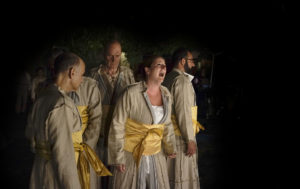
PLATE 3. The Merchant of Venice, 2016. Compagnia de’ Colombari in the Venice Ghetto. Karin Coonrod, director. Actors: Ned Eisenberg, Andrea Brugnera, Adriano Iurissevich, Jenni Lea-Jones, Sorab Wadia. Photo: Andrea Messana.
But Coonrod (I think) is most happy when she can set plays in places naturally inhabited by the audience, and to which the audience brings its own set of lived resonances—like the boys at the prep school performing in the gymnasium as gym—or where the play’s action naturally dovetails with the place—like performing the Merchant of Venice in the piazza of the very neighborhood where Jews were once locked in at night.
The town of Orvieto is chock-full of such opportunities. Its rich but largely forgotten tradition of sacre rappresentazioni was revivified in Coonrod’s Strangers & Other Angels. The creation and fall episodes were performed against the façade of the Duomo, with its stupendous panels narrating the same events in bas-relief marble. The altar in the church of San Giovenale was used (with permission from ecclesiastical authorities) to enact Abraham’s sacrifice of Isaac, rendering vivid the typological resonance between Abraham’s son and the other only-begotten son whose completed sacrifice is re-presented in every Eucharist performed at that altar. Parishioners still remember the occasion.
For the episode of Christ’s harrowing of hell, Coonrod chose a steeply descending crossing where five streets merge, infernally dangerous for drivers and pedestrians alike [see Plate 1]. Months afterwards, a local friend told me that she now associates the place with the play, and that each safe crossing feels like a small escape from hell.
Such strategies are not gimmicks but rather means of revivifying for our time a central feature of medieval religious drama: the interpenetration of characters from scripture and ordinary folk, of identity and sacred narrative. The water-carriers guild is responsible for the episode of the flood; the shepherds in the nativity play in the English Wakefield cycle speak the local rural dialect.
As Coonrod says of the nativity play, “To convey the radical nature of Jesus’s birth, the nativity scene has to be carved out of the crowd. For an audience to be involved in the abject poverty and emotional richness of the event, the birth has to happen suddenly right in their midst—out of nothing.”
But Coonrod’s boundary-crossing is hardly relegated to the production of medieval religious plays. Her ongoing project has been to create theater that resonates with the audience’s experience of their own settings of life, activating moral and spiritual dimensions to which we, sometimes deliberately, numb ourselves. Performing Merchant of Venice in the Ghetto was powerful, but even more profoundly moving to many in Coonrod’s ensemble was their follow-up performance in the high-security prison in nearby Padova—only actors and inmates in a bare room—where the themes had visceral grip.
This approach informs what many of Coonrod’s fans see as one of her masterworks: her own adaptation of Walt Whitman’s long and (to most modern readers) gangly “Song of Myself” into the exuberant mix of dance, music, and spoken word entitled More or Less I Am. Ian Crouch described it in The New Yorker:
It was a chilly evening, and grew more so as the sun slinked away up the Hudson. But the performers, lighted from below on a rudimentary set, came in close to the audience, and the ruckus they kicked up seemed to keep everyone warm. I can’t do the performance justice here; Whitman’s own manic enthusiasm might be required to describe the joyous jamboree that occurs when you combine a fiddle, flute, cello, guitar, and steel drum with readers from the audience, an opera singer, the sounds of jets flying overhead and bells ringing at Riverside Church, the guy who played Brother Mouzone on The Wire, and a terribly cute little girl—to name just a few of its many jangly moving parts….
And Whitman would have been delighted by the crowd—a baby, the aged, young artist-looking types, a jogger in a knee brace who’d doubtless been drawn in by all the barbaric yawping, a guy in a suit who took calls on his cell phone. For an hour…it felt as though we’d created, audience and performers together, a real community. To risk sounding trite, we’d become Whitman’s Americans living in his America.
This drawing together of performers and audience in shared joy (or grief or repentance) is captured in Patrice Johnson’s account of what happened to her in the Orvieto:
When I first got to Orvieto with the other Americans and Michael Rodgers who is also Caribbean [Patrice is of Jamaican descent], it was obvious that there were not many black people there. Though people were polite, I would inevitably catch the stare of children who would either want to touch me or were actually frightened. All that changed the night we performed for the community….
The people gave us their hearts and took in the cast, including the black actors, as we traveled through the streets and led them through hell and back into the open piazza…. At the end we broke bread and shared wine with the citizens of Orvieto.
At the banquet, Johnson recalls, the people of Orvieto “started hugging and kissing me effusively on my face and forehead, at times lifting me off my feet. I was no longer some stranger to fear. That was one of the most exhilarating moments in theater for me, and I have done a lot.”
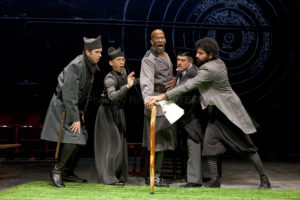
PLATE 4. Love’s Labor’s Lost, 2011. The Public Theater, New York. Karin Coonrod, director. Actors: Robert Stanton, Francis Jue, Reg E. Cathey, Steven Skybell, Mousa Kraish. Photo: Richard Termine.
Designing the Space
“Ms. Coonrod calls directing ‘staging sculpture,’ and it is her twin loves of great narrative and pictorial form that drive her esthetic ideas.” So wrote reviewer Steven Drukman of her Henry VI trilogy.
In her 2014 production of Tempest (at La MaMa in New York) Coonrod placed the audience in several rows along two sides of a plain black floor, with the minimal separation between audience and action typical of her set designs. White stripes painted in the middle of the floor inscribe a square within a square within a square, each pivoted so that its corners bisect the sides of the outer square. The only object—it is more than a prop—is a large, heavy-looking ball suspended inches above the floor from a cable attached somewhere high in the darkened rafters [see Plate 7].
The play begins when the entire cast processes across the space from end to end. They are suddenly backlit by bright spotlights. Prospero sends one of the actors out to set the pendulum ball moving in a wide slow arc. The lights go out; the ball is lit from the inside, and hundreds of small holes in its surface appear like stars and constellations. We feel the vertigo of the entire cosmos swinging. We hear the cries of those on the ship sinking in the hurricane. Miranda, holding a lantern, cries out to her father in pity for the souls about to be lost. Listening to her appeal, Prospero paces slowly and exactly along the lines of the middle square on the floor, finally answering Miranda that none will perish, and it is now time for her to know her past. Is Prospero’s walking the lines of the sacred diagram a means of conjuring his magic? Perhaps the lines themselves suggest the alignment of his actions with the choreography of divine providence.
The diagram on the floor is unusually explicit for Coonrod, but such hidden geometries inform all of her staging design. “When I look at Fra Angelico’s painting of the Last Judgment, I hear jazz,” she says. “Check out the angel at far left with hand on hip in a syncopated jazz pose, leading the blessed into heaven in the painting in the Museo di San Marco, Florence.” In the painting, the angels are gathering the just-raised souls of the saved into a circle in order to dance their way through the gate of heaven. The pattern is formal, but Coonrod loves how the fingertips of this particular angel’s raised hand almost but not quite touch those of her human partner—we can feel the electricity between them.
Prospero’s square and the angels’ circle may have to stand in for my faltering efforts to describe Coonrod’s principles of design, which are on the order of ballet. The title of Margaret Visser’s wonderful book about early church design, The Geometry of Love, puts it in a nutshell, as does T.S. Eliot’s “Burnt Norton”:
There they were as our guests, accepted and accepting,
So we moved, and they, in a formal pattern,
Along the empty alley, into the box circle…
There would be no dance, and there is only the dance.
———————-…both a new world
And the old made explicit.
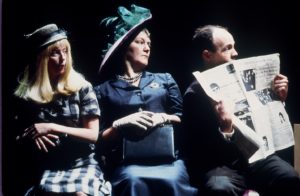
PLATE 5. Everything That Rises Must Converge, 2001. New York Theatre Workshop. Karin Coonrod, director. Actors: Laura Hicks, Ledlie Borgerhoff, John McAdams. Photo: Joan Marcus.
In theater of joy and celebration, of concordia, when things can be made right, the harmonies are visibly present. In the theater of sorrow, the discord in human hearts too is visually present as broken or unresolved patterns. When Shylock knows that his daughter has eloped and betrayed him, all five Shylocks make their way across the piazza-stage and gather in a circle. Here is Coonrod’s own description:
At the call of a haunting trumpet…wafting from the rooftop, the five actors playing Shylock emerge for the first time together, forming a huge circle in the Ghetto’s playing space…. They are ritualistically dressed by the “black angels” (our visible performing crew) with cloaks and thick golden silk sashes wound around their torsos to mark them as the Jew. The Venetians circle around the five Shylocks, hurling ethnic epithets, demeaning, vulgar and vicious…. The third Shylock is played by a woman (Jenni Lea Jones), who turns to break the unbearable cacophony of mockery with a howl that slams the Ghetto into silence [see Plate 3].
Coonrod’s directorial eye—and the audience’s eye, once trained—sees each actor’s gestures, comportment, and movement in relation to everyone else on the stage. The movement is like a constellation of stars—her own metaphor. The usual considerations of stage right, stage left, down stage, up stage, are irrelevant. An entire empty stage becomes resonant with the arc of words through the air.
Critics often comment on Coonrod’s spare stages. There are few props, mainly chairs. The actors in her staged performance of Flannery O’Connor’s story “Everything that Rises Must Converge” arrange their chairs to create the bus wherein most of the action occurs [see Plate 5]. For texts&beheadings/ElizabethR the only props on the square black stage are four identical high-backed chairs (designed by John Conklin, an elder statesman of opera set design who accepts every opportunity to work with Coonrod). These are constantly rearranged by the four Elizabeths, moved in patterns, stacked up, used as a dressing screen, a prison. The changing dispositions of Elizabeth are signaled by how the actors sit in these chairs, by how they handle them.
The costume design of her productions is likewise spare and restrained. Although she has said little about her sartorial aesthetic, she did write of the joy of finding skilled Venetian Stefano Nicolao who (for Merchant of Venice) could “push past the heavy period costumes, and move into a more fluid aesthetic that honored the Elizabethan silhouette with a very light modern touch. I wanted this ease in the clothing, since the audience would witness all the costume changes.”
To me, Coonrod’s costumes are poised between the fictional or idealized and the believably, naturally worn. For texts&beheadings/ElizabethR, Romanian costume designer Oana Botez (a regular member of Coonrod’s team) created four differently cut and patterned silver gray gowns for the four Elizabeths—a gorgeously subtle feast for the eyes. None had the ornate weight of the dresses seen in famous portraits of the queen, but each alluded to an element of Elizabethan courtly fashion.
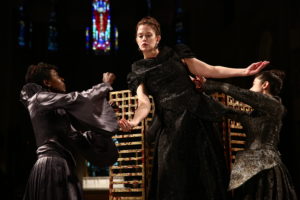
PLATE 6. texts&beheadings/ElizabethR2017. Compagnia de’ Colombari at the Cathedral of Saint John the Divine, New York. Karin Coonrod, director. Actors: Helga Davis, Juliana Francis-Kelly, Adina Verson. Photo: Paula Court.
But in that play the pièce de résistance of costuming is heard and enacted but not seen. It is the vesting of Elizabeth in the costume of sovereignty by the other three, as ladies in waiting [see Plate 6]. The inventory of unseen items, beginning with “a fine camis smock of white linen,” numbers no fewer than eighteen pieces of clothing whose increasing weight—the necessary but uncomfortable weightiness of the role she must play—is signaled in Elizabeth’s comportment.
Coonrod’s staging might be called minimalist, but not in the sense that the space is empty of meaning. Rather, there is a careful excising of interferences. It is more like the condensation and concentration of liturgical actions, no extraneous movement, each object “taking its place to support the others” (as Eliot writes in “Little Gidding”).
Performing the Text
Ms. Coonrod is an experimental director who begins and ends with the text, the narrative sweep, words—and thank goodness for that. She and her immensely skillful ensemble are actually unafraid of Shakespeare! It is such a pleasure to see (and hear). They do not treat the text as sacred; they respect it. And in respecting it—and dusting it off—they’ve brought it back to life.
John Heilpern’s words about Coonrod’s King John could be said of all her work. Let’s start with her not treating the text as sacred. In several ways, Coonrod tampers with the text in order to remain answerable to it. Especially with Shakespeare, she subtracts, edits, and reconfigures, as with her acclaimed production at the Public Theater of the densely long, boring-for-we-moderns three-part Henry VI. Ben Brantley of the New York Times described it as a “galloping six-hour production…that left audiences panting.”
At other times Coonrod adds to the text, as in the medieval mystery plays, inserting poems including James Weldon Johnson’s “The Creation” and others by Erik Ehn, Carl Hancock Rux, and Pope John Paul II, along with a passage from a sermon found in Zora Neale Hurston’s 1934 novel Jonah’s Gourd Vine. Same with the music, which blends gospel and jazz with modern classical elements played on an eclectic mix of instruments. In Coonrod’s phrase, “the dramatic trajectory of the original fused together the new and the old.” The effect is to render the archaic discourse of the texts equally contemporary, dissolving any sense of museumized costume drama.
As I’ve said, Coonrod splits characters into parts. The part of King Lear (in her production of 2000) is divided up among the whole cast. Her Shylock is played by five actors. This dividing of a single character into parts constitutes the “play itself” in texts&beheadings/Elizabeth R, whose script was composed by Coonrod herself mainly from private and public documents by and about Queen Elizabeth I. The four Elizabeths employ four rhetorical modes (or zones of discourse, as we might say) that were the stuff of the educational training of the age, namely: Strategy (negotiating political minefields); Survival (making an appeal without losing self-mastery); Prayers (the eloquence of transparency); and Sovereignty (exercising the authority with which one has been invested). By distinguishing these, Coonrod presents a single character who must move with breathtaking versatility in a world where all’s a stage, deftly and courageously adapting her verbal costume in order to manage the one role that she accepts as her deep identity: married to no one but her people.
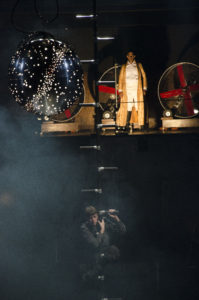
PLATE 7. Tempest, 2014. La MaMa Experimental Theatre Club, New York. Karin Coonrod, director. Actors: Reg E. Cathey (Prospero), Joseph Harrington (Ariel). Photo: Ken Van Sickle.
Coonrod’s textual play is at its most sophisticated in her staged version of O’Connor’s “Everything that Rises Must Converge.” As a condition for performance, Coonrod was obliged by the trustees of the O’Connor estate to keep strictest fidelity to the text, neither adding nor subtracting a word, performing even the “he saids” and “she saids.” Yet by dividing the narration among the actors, Coonrod modifies how the audience experiences the text.
In an astute discussion of the play in the Flannery O’Connor Review, Susan Srigley describes how, “instead of defining the text through O’Connor’s perspective as author, the text inhabited by the actors becomes multivalent…. No longer attending to an interpretation of O’Connor, the audience is free to watch the story unfold.” While Julian is mortified by his mother’s condescending racism, it is his own cynicism and lack of love that the shared narration highlights.
By the end of the ensemble’s telling of the story, Julian has become the subject of the audience’s hope for the sort of fierce mercy that is the hallmark of O’Connor’s fiction. And we get it, as he stoops over his collapsed mother. “He looked into her face and caught his breath. He was looking into a face he had never seen before.” Julian calls out (or whispers, under Coonrod’s direction), “Mamma, Mamma,” finally vulnerable in the hour of her death to the potential of conversion, to his entry, however “postponed,” “into the world of guilt and sorrow.”
Heilpern calls her work “a pleasure to see (and hear).” In her conversation with Visky, Coonrod notes how “in English we typically refer to the audience, from audio; we hear a play. But in Italy, it is spettatore; as spectators we see the play, the spectacle.” She agrees with Visky’s comment: “To watch a play and to hear, to listen to a play, those are not two different ways of approach. They are different sides of the same perception of the play as a whole.”
Sometimes Coonrod plays with each side of the coin. At the end of the outdoor production of Merchant of Venice in the Jewish Ghetto, the word Mercy in English, Italian, and Hebrew was projected on the façades of the ancient townhouses that ring the piazza, a visual echo of the theme that Coonrod brings front and center.
At the beginning of Coonrod’s production of Tempest, as the pendulum ball of the cosmos swings across the darkened stage, we hear, but do not see, the sailors’ and passengers’ cries for help from the sinking ship. At the moment of melodramatic spectacle, Coonrod shuts down the eyes—we listen acutely; the words sink in as words.
The entirety of Coonrod’s approach to theater is designed to help us hear and see the words afresh, with new understanding and with softened hearts. Perhaps we can say that Karin Coonrod reaches toward a performance of the word like the one Jesus gave on the road to Emmaus. At the end of the play, when the actors disappear, we leave the theater saying to one another, like the two disciples, Did not our hearts burn within us?
See more images and read Karin Coonrod’s essays on her work at www.artfaithhistory.org/strangers and www.artfaithhistory.org/shylock-returns-to-the-ghetto.
Read our Web Exclusive interview with Karin Coonrod here.





